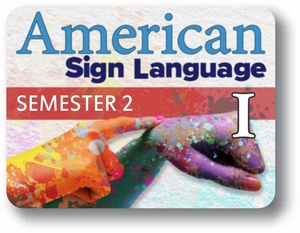
The predominant sign language of Deaf communities in the United States, American Sign Language is a complex and robust language. American Sign Language 1b: Learn to Sign will introduce you to more of this language and its grammatical structures. You will expand your vocabulary by exploring interesting topics like Deaf education and Deaf arts and culture.
Unit 1: Who’s Who?
Imagine trying to function and communicate in a hearing world all day, every day. This is the reality for many Deaf individuals in the workplace. While accommodations and adaptations have made things easier, working in the hearing world has its challenges. Together, we’ll learn signs for various professions and terms frequently used on the job. We’ll also dive further into signing numbers—did you know that some numbers in ASL rock? Understanding this concept will make your numbers crystal clear in Sign Language. Plus, we’ll get a glimpse into Black Deaf history, which helped form a unique subculture and dialect of ASL.
What will you learn in this unit?
Unit 2: Well, It’s About Time
Do you ever wonder how Deaf students learn? How might it be different from how a hearing student is educated? Together, we’ll take some time to learn about the options for Deaf education today. Of course, when school is over, it’s time to celebrate! Knowing how to sign about time and days will help to make sure you don’t miss out on the fun. We’ll also learn how to indicate the past, present, and future in ASL—it is so efficient that you may wonder why we don’t have something this simple in English!
What will you learn in this unit?
Unit 3: Taking the Stage By Storm!
What season is it? It’s theater season! Did you know there has been a thriving and creative Deaf theater scene since the era of the Deaf clubs (and even before)? There are Deaf dancers and even Deaf singers (yes!) who have appeared on network television. And beyond the performing arts, there is a whole movement in Deaf visual arts that expresses political and personal perspectives of Deaf artists. So, what are we waiting for? Let’s jump in and cover the creative arts as well as signs about seasons and weather.
What will you learn in this unit?
Unit 4: Expanding Your Vocabulary
Cut out the background noise! Technology can help Deaf and Hard of Hearing people more efficiently function in the wider world—let’s explore a few of the types. Then we will expand your vocabulary with sports, animals, and foods. With all this ASL vocabulary, maybe you’ll want to choose a career where you can use your ASL skills—whether you want to be a sign language interpreter or just use your skills to help communication in another profession, there are so many options to put your ASL into action!
What will you learn in this unit?
